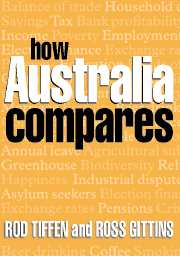Book contents
- Frontmatter
- Contents
- Reading the Tables
- Acknowledgments
- Abbreviations
- Introduction
- 1 People
- 2 Government and Politics
- 3 Economy
- 4 Work and the Labour Force
- 5 Government Taxes and Spending
- 6 Health
- 7 Education
- 8 Inequality and Social Welfare
- 9 International Relations
- 10 Environment
- 11 Science and Technology
- 12 Telecommunications and Computing
- 13 Media
- 14 Family
- 15 Gender
- 16 Lifestyles and Consumption
- 17 Crime and Social Problems
- 18 Religion, Values and Attitudes
- Sources and References
- List of Tables
17 - Crime and Social Problems
Published online by Cambridge University Press: 22 September 2009
- Frontmatter
- Contents
- Reading the Tables
- Acknowledgments
- Abbreviations
- Introduction
- 1 People
- 2 Government and Politics
- 3 Economy
- 4 Work and the Labour Force
- 5 Government Taxes and Spending
- 6 Health
- 7 Education
- 8 Inequality and Social Welfare
- 9 International Relations
- 10 Environment
- 11 Science and Technology
- 12 Telecommunications and Computing
- 13 Media
- 14 Family
- 15 Gender
- 16 Lifestyles and Consumption
- 17 Crime and Social Problems
- 18 Religion, Values and Attitudes
- Sources and References
- List of Tables
Summary
Crime rates
Crime and Social Problems is one of the sections of this book where the capacity of statistics to capture reality is most problematic. In measuring overall crime rates, there are two main methods, reported respectively in Tables 17.1 and 17.2, but each has its own problems.
Table 17.1 reports crimes officially recorded by the police per 100 population. Official crime statistics are always haunted by the ‘dark figure’ – the gap between the official and the actual rates of crime. The dark figure has two main sources: either that crime is not reported to the police or that reported crime is not recorded. Neither is constant either over time or between countries. It used to be the case, for example, that very serious offences such as sexual assaults and child abuse were not reported because the victim felt powerless to achieve justice or feared the police process that would follow. One suspects that the proportion of such offences now reported has increased substantially.
Even after a report is made, police have some discretion about whether and how it is recorded. Sometimes ulterior bureaucratic-political motives may enter: either deflating the rate of unsolved crimes to make police look more effective or inflating it in order to plead for extra resources. More importantly, the recorded rate reflects levels and patterns of policing, especially in some categories such as drug offences and public order offences.
- Type
- Chapter
- Information
- How Australia Compares , pp. 223 - 238Publisher: Cambridge University PressPrint publication year: 2004



